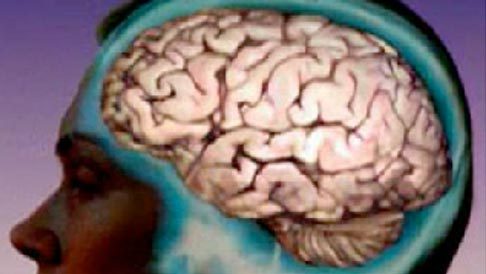Clearing the Mind: How the Brain Cuts the Clutter

Newly discovered neurons in the front of the brain act as the bouncers at the doors of the senses, letting in only the most important of the trillions of signals our bodies receive. Problems with these neurons could be the source of some symptoms of diseases like attention deficit disorder and schizophrenia.
"The brain doesn't have enough capacity to process all the information that is coming into your senses," said study researcher Julio Martinez-Trujillo, of McGill University in Montreal. "We found that there are some cells, some neurons in the prefrontal cortex, which have the ability to suppress the information that you aren't interested in. They are like filters."
Humans are constantly taking in huge streams of data from each of our senses. Our brains have a seeming magical ability to filter only the most important signals (like "ouch, burning!" or "ooh, shiny!"). Without this ability to filter we would suffer from sensory overload, with all stimuli constantly battling for our attention.
A cluttered mind
This "brain clutter," or inability to filter out unnecessary information, is a possible mechanism of diseases like attention deficit hyperactivity disorder (ADHD) and schizophrenia. For instance, when a student can't filter out the majority of the sensory input in a classroom, they become easily distracted and unable to focus on the task at hand. They physical symptoms of schizophrenia, which include clumsiness and random movements, could be linked to an inability to filter outgoing motor signals. [Marijuana Worsens Schizophrenia]
Previous research has linked this filtering process to the prefrontal cortex, a brain region involved in taking in external information and turning it into complex behaviors.
Martinez-Trujillo and his team discovered that specific neurons in this area take on the filtering task. They do so by downplaying the useless information you receive.
Get the world’s most fascinating discoveries delivered straight to your inbox.
"Those cells allow you to focus on the things you are interested in and suppress everything else," Martinez-Trujillo told LiveScience.
Mindful monkeys
The researchers discovered these neurons by training monkeys to recognize a rank order of colors. The monkeys would watch a screen with two different color dots moving across the two sides. The colors were ranked arbitrarily from lower importance (gray) to highest (turquoise), and the monkeys were taught which of the colors were more important.
When the dots of the more important color changed direction momentarily, the monkey would release a button. To do the task correctly, the monkeys needed to understand which of the colors were more important and ignore the movements of the other, less important dots. After the monkeys learned this task, the researchers scanned their brains to see which neurons were firing, noticing a certain subset in the front of the brain lighting up.
The researchers also noticed that the task was harder the closer together on the rank-order scale the two colors were. This phenomenon is also seen when mentally processing numbers. Humans answer faster when asked if 9 is larger than 1 than when asked if 2 is larger than 1.
The mechanism by which they do this important task isn't clear, but when identified it could help researchers understand and treat these attention disorders. Improving these cells' ability to filter out unwanted information could help refocus attention of kids with ADHD. "It would allow those children to focus on the teacher and not be distracted by everything else around them because they can filter those things out," Martinez-Trujillo said.
The study is published in the April 13 issue of the journal Neuron.
You can follow LiveScience staff writer Jennifer Welsh on Twitter @microbelover.
Jennifer Welsh is a Connecticut-based science writer and editor and a regular contributor to Live Science. She also has several years of bench work in cancer research and anti-viral drug discovery under her belt. She has previously written for Science News, VerywellHealth, The Scientist, Discover Magazine, WIRED Science, and Business Insider.

